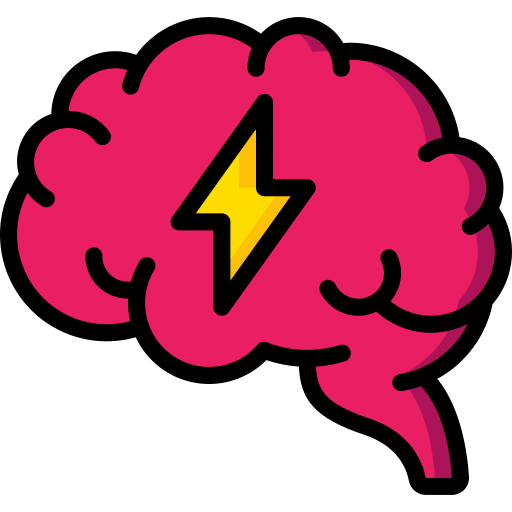Stroke

Stroke Screening questions/ Initial Assessment
1. Is there a focal neurologic deficit?
a. Unilateral weakness or sensory changes
a. Unilateral weakness or sensory changes
b. Vision loss or double vision
c. Speech or language difficulty: dysarthria/aphasia
d. Dizziness, trouble walking or ataxia
2. Did the symptoms start suddenly OR get worse suddenly?
3. Was the child last seen well within 5 hours?
Management:
- Obtain Venous Access
Labs: CBC, BMP, coagulation studies, and EKG - NPO and head of bed flat
- Normotension: target SBP between 50th percentile and 15% above 95th percentile for age, treat hypotension with NS +/- pressors, treat significant HTN , to lower by 25% over 24 hours
- Normovolemia: isotonic fluids at maintenance
- Normoglycemia: no glucose in fluids unless hypoglycemic
- Normal O2, CO2, pH
- Normothermia: treat patient with T> 37 Celsius with acetaminophen
- Seizure control: AED ASAP
- Obtain Acute Stroke imaging (MRI brain: DWI, T2 Flair, ASL, SWAN and MRA head); if MRI not possible, combination CT/CT angiogram can be considered
- (+) hemorrhagic stroke: consult Neurosurgery
- (-) hemorrhage stroke
- evidence of early infarct, free of hemorrhage, and w/ evidence of vascular occlusion
- Time from onset + estimated time to arrival ≥ 4.5 hours, or age ≤ 2 years or resolving deficits or tPA contraindication** → Admit to PICU
- Time from onset + estimated time to arrival ≤ 4.5 hours and age ≥ 2 years, and persistent deficit and no tPA contraindications** → consider tPA
- evidence of early infarct, free of hemorrhage, and w/ evidence of vascular occlusion
- For tPA, should have BOTH proven infarct AND arterial occlusion on MR
- IF tPA candidate
• Total Dose: Alteplase (tissue plasminogen activator 1mg/ml), 0.9 mg/kg IV
• Bolus: 10% dose IV over 1-2 minutes
• Infusion: remaining 90% over 1 hour
• Maximum total dose: 90 mg
- IF tPA candidate
- PICU Management
- Continuous cardiac monitoring
- Transthoracic ECHO with bubbles
- Consider 4 Extremity Doppler
- EEG if seizure activity suspected
- Neuro Checks Q1 hour
- DVT prophylaxis with compression devices
- Labs: Coags, ESR, CRP, Lactate, Tox screen, Urine pregnancy. Blood culture
- Consider LP for infectious/inflammatory etiologies
- Hx Sickle cell: reticulocyte count, Hemoglobin S%, type/cross, call HEME
- Send relevant supplemental labs with aid of neurology and hematology
Therapy:
- Initial Therapy per neurology (if no hemorrhage)
- Aspirin3-5mg/kgdaily(MAX 162 mg)
- If cardiac source or cervicocerebral dissection suspected initiate unfractionated heparin IV (goal anti-factor Xa level 0.35-0.7)
**Tissue Plasminogen Activator (tPA) contraindications**
HISTORY
- > 4.5 hrs from last seen well
- Patients in whom time of symptom onset is unknown
- Stroke, major head trauma or intracranial surgery in the last 3 months
- History of prior intracranial hemorrhage, known AVM or aneurysm
- Major surgery or parenchymal biopsy within 10 days
- GI or GU bleeding within 21 days
- Patient with neoplasm/malignancy or within one month of completion of treatment for cancer
- Patients with underlying significant bleeding disorder. Patients with mild platelet dysfunction , mild von Willebrand disease or other mild bleeding disorders are not excluded
- Previously dx d primary angiitis of the central nervous system or secondary arteritis.
PATIENT FACTORS
- Patient who would decline a blood transfusion if indicated.
- Clinical presentation c/w acute myocardial infarction or post MI pericarditis that requires evaluation by cardiology before treatment
- Arterial puncture at non-compressible site or lumbar puncture w/in last 7 days. Patients who have had cardiac cath via a compressible artery are NOT excluded.
ETIOLOGY
- Stroke due to SBE, sickle cell disease, meningitis, embolism (bone marrow, air or fat), or moyamoya disease.
EXAM
- Persistent systolic blood pressure >15% above the 95th percentile for age while sitting or supine
- Mild deficit (PedNIHSS <6) at start of tPA infusion
- Severe deficit suggesting very large territory stroke pre -tPA
- PedNIHSS >25, regardless of infarct volume seen on neuroimaging
IMAGING
- Symptoms suggestive of SAH even if CT or MRI of head are normal
- CT with hypodensity/sulcal effacement >33% of MCA territory / ASPECTS ≤7
- Intracranial cervicocephalic arterial dissection.
LAB DATA
- Glucose <50 mg/dL (2.78 mmol/L) or >400 mg/dL (22 mmol/L)
- Bleeding diathesis including Platelets <100,000, PT >15 sec (INR >1.4) or elevated PTT > upper limits of the normal range.